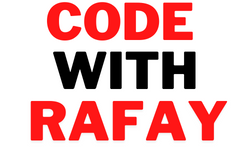What is Tag in HTML?
What is Tag in HTML? : Tag's meaning could be a little more obvious.
A HTML tag is usually characterized as a bunch of characters comprising an organized order for a Page. At the center of HTML, labels give the bearings or recipes to the visual substance that one sees Online.
HTML labels have forever been significant throughout the entire existence of Website architecture. During the beginning of the Internet, they were liable for a greater part of Web code. That may not be the case any longer, yet HTML labels are currently at the focal point of how Website pages are arranged. Different sorts of dialects have been worked around the foundation of HTML, for example, Flowing Templates (CSS), which makes it more straightforward to make steady and all-encompassing styles and variety plans.
HTML labels incorporate labels for references, labels for tables, labels for titles or titles, and so on. A HTML label comprises of the label name in precise sections and may come in pair, which makes up the start and finishing label that outline a specific piece of code, text or different labels. The starting label comprises of the name, alternatively followed by at least one credits, though the closure label comprises of a similar name went before by a forward slice ("/"). For instance, the HTML tag "<p>" starts a passage, while "</p>" closes that section. This is a predictable sentence structure in HTML.
A HTML tag is a piece of markup language used to show the start and end of a HTML component in a HTML report.
As a component of a HTML component, HTML labels assist with webbing programs convert HTML reports into website pages. For instance, the <p> tag is utilized to arrange text content into section components and the <img> tag is utilized to implant picture components.
Many labels, however not all, utilization an initial tag and shutting tag to fold over the substance that they are utilized to adjust. Shutting labels are indicated with an oblique punctuation line like this:
</tag name>. HTML labels are not apparent in the program.
Coming up next are a few realities about HTML labels (in addition to a couple of realities about XHTML labels as well):
Site pages are downright text.
"Labels" give internet browsers guidelines about the website page, for example, where to show pictures, and how the record is organized.
Labels are constantly encased in point sections: < >.
Labels are involved components and qualities. A component is an item on a page (like a heading, passage, or picture), and properties are characteristics that portray that component (like width and level).
Labels for the most part travel two by two. An initial label starts a part of page content, and an end label closes it. For instance, to markup a part of text as a passage, you would open the section with an initial passage tag <p> and close it with an end passage tag </p> (shutting labels generally continue the component with a/).
A couple of labels are called non-compartment labels, since they contain no satisfied - they remain solitary. Models are pictures and line breaks. XHTML is more severe than HTML, and expects that all open labels should be shut, regardless of whether they're not holder labels. Along these lines, non-compartment labels end in/>. For instance, the tag for a line break is <br/>. HTML doesn't have this equivalent prerequisite, however it's a beneficial routine to get into in the event that you at any point need to code in XHTML.
Labels in HTML are not case touchy, but rather in XHTML all labels should be in lower case.
Void area is overlooked by internet browsers. In this way, in the event that you hit the space bar on numerous occasions inside a record, only one of those spaces will really be shown by the program.
Labels can be settled. For instance:
<div><p>This section is settled inside a division</p></div>
The things enclosed by three-sided supports (the < … > characters) are called labels. These are the main piece of HTML markup that is utilized to depict the design of content. There are both opening labels and shutting labels (or beginning labels and finishing labels) which come two by two to encase bits of content.
For instance, in the above model, <title> is an initial tag, and </title> is the relating shutting tag. The <title> tag is utilized to encase the principal title for the report: the one that is shown in the title bar of the program (and utilized as the name in the event that you bookmark the page, and showed in web search tool results for the page).
Another label we ought to take a gander at immediately: the <body>… </body> tag is utilized to encase the fundamental piece of the page: the genuine substance that you read in the program's primary window.
We should add a little to our page so there's really something to see when we load it:
<!DOCTYPE html>
<html>
<head>
<meta charset="UTF-8"/>
<title>My First Page</title>
</head>
<body>
<p>This is a passage on my page. It shows the sort of stuff
that goes into the page body.</p>
</body>
</html>
The <p>… </p> tag is utilized to encase a passage on the page. The sentence "This is a section on my page." will seem designed as a passage when we view the page in an internet browser. You can see this HTML document here.
You could see on that page that the line decipher in the code above doesn't match how the section is designed when you view the page (except if you end up having the specific right size program window. The <p> label demonstrated that we needed the substance designed like a section: that's what the program did and picked the spots to break the lines (in addition to other things) for your program.



.png)


.png)
0 Comments